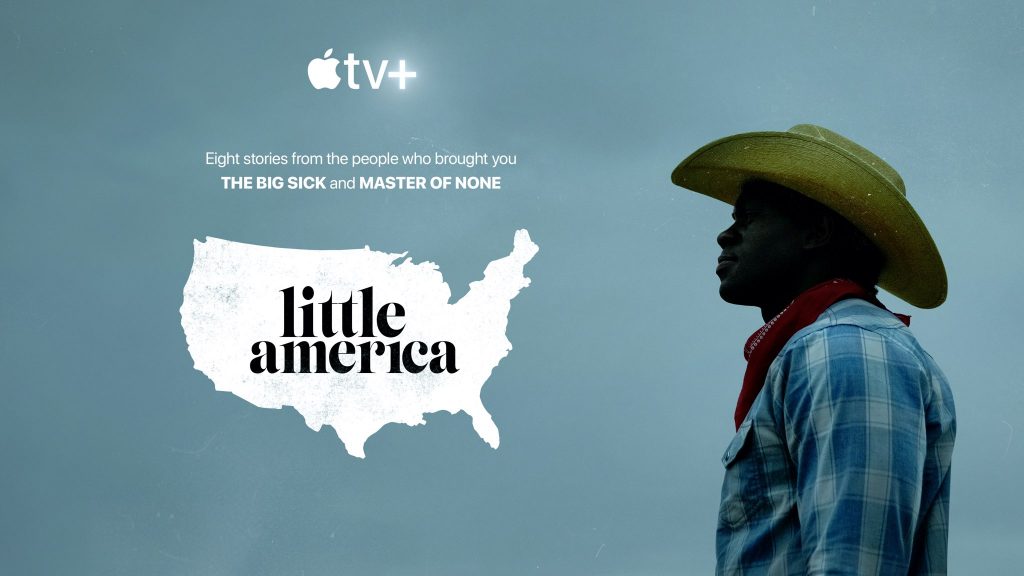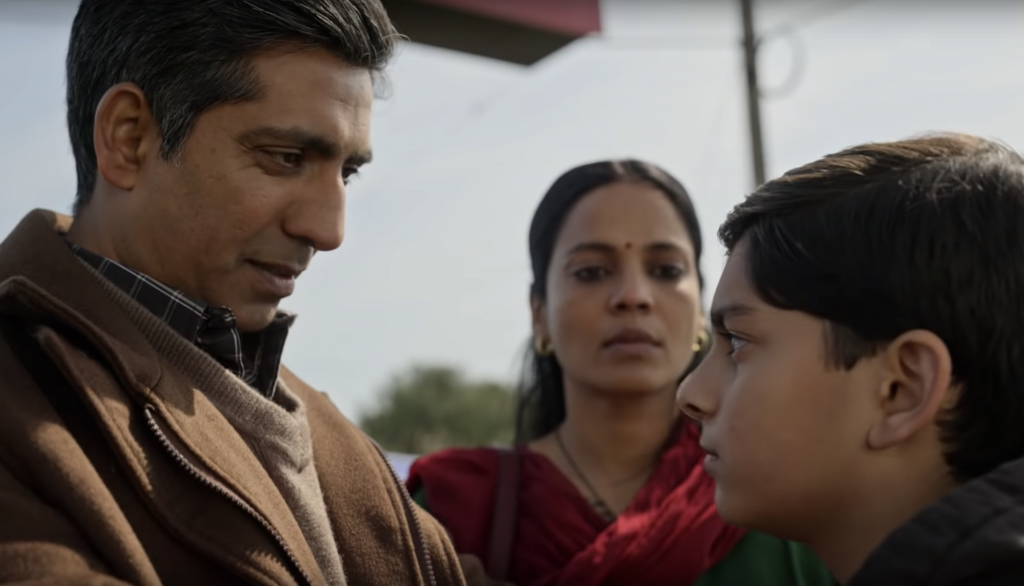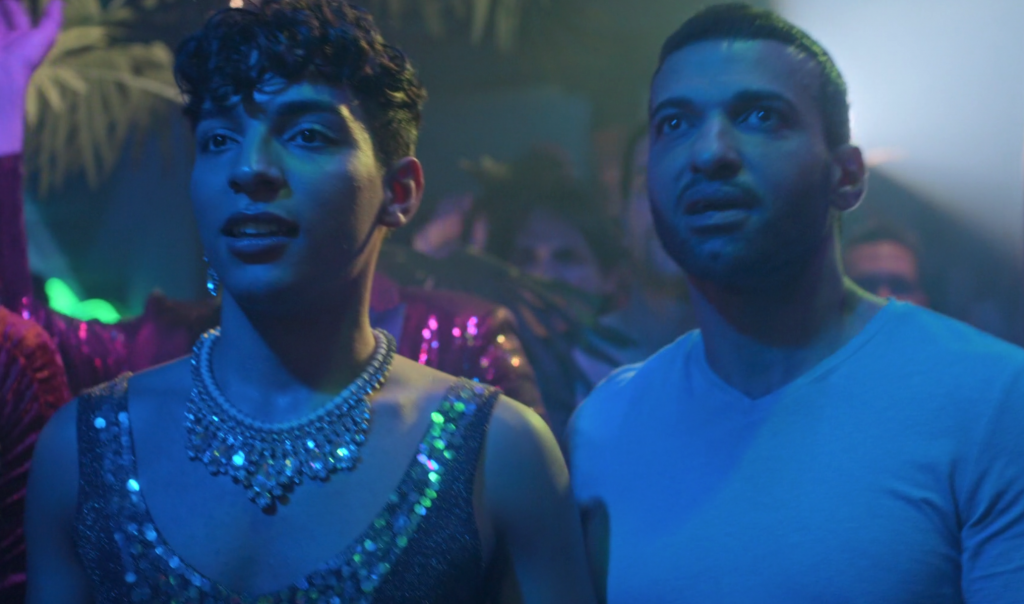
On a gray, rainy Wednesday last week, NBC hosted a press junket for the new show “Little America,” at the unassuming and charming Whitby Hotel in Manhattan. I spoke to Kumail Nanjiani and Emily V. Gordon, writers and executive producers of the show. I walked into their suite and they were sitting on the couch, relaxed, with their feet up – getting up to greet me. Kumail in a black turtleneck and jeans, and Emily in a sparkly, black blazer and black pants looked every bit as glamorous as you would expect them to be, but there was easy energy about them.
The show is an anthology series, with eight episodes in season one, based on the true stories from immigrant families across the United States. It doesn’t center around one ethnic group, instead of telling stories about immigrants from all over the world. The creative duo falls on either side of the immigrant experience – which brings them together in their passion to tell the stories.
Kumail came to the U.S. on a student visa when he was 18, and still remembers the experience of applying to a “faceless bureaucracy that is completely cold and uncaring” and how powerless it can make a person feel. He hopes more Americans will understand the fear of deportation through the first episode in the series, which explores its impact on families.
The fear of deportation is very real for people… Because of paperwork, you can be separated from your family, from everyone you love, and work.
Emily’s experience with the immigration system is through her relationship with Kumail, which gave her a “glimpse into the terror and fear.” It’s this experience that drove her to tell these stories. She said,
I thought this is something everyone should know, should feel and understand how scary and helpless this is.

Kumail said,
The show is for everybody, each story has something everyone can connect to, it’s a family show.
While they didn’t set out with the intention of the show to be political, Kumail recognizes its political nature.
It’s coming out at a specific point in American history… It was going to be more profound if we didn’t attempt to make any kind of message.
Making the show itself was a political statement in its own right. While the content of episode eight, “The Son,” dealt with a deeply political issue — a gay Syrian man seeking asylum in the US — it’s production was political too. The shooting had to be moved to Canada because the main actor, a Libyan, could not come into the States because of the Executive Order 13780, banning travelers from specific countries. However, both Kumail and Emily didn’t want to “tell the audience how to feel about which side of the debate to fall on.” With adamant faith in the audience, they both believe that “the audience is very smart, they can draw their own conclusions.”

Family is a big theme in “Little America,” both the presence and the absence of family and how that impacts immigrant experiences. Speaking about how much of his own life or experiences he brought into the show, Kumail describes a scene from the first episode, “The Manager,” in which the Indian family is playing cricket together.
I grew up playing cricket on the streets with my dad, with my brother, with just people from the neighborhood… But more than anything I wanted to show a loving family.
Growing up in Pakistan, the focus on family and community was very strong for Kumail. He said,
[It was] very important to show a family that was close – a family that prays together, eats together, watches shows together.
https://www.instagram.com/p/B8fGYQUBM_2/
“Little America” is not only unique in content, as an anthology series about immigrant stories, with no big-name stars; but also, unique in its creative process. The stories are based on true events of different immigrant families, sourced through Epic Magazine’s collection. The actors, writers, and directors are all from the culture that the episode represented.
Lighting up, Kumail shared an incident where someone from Nigeria came up to him and said that they also make fufu from Bisquick at home and how that’s not the best way to do it, which happens in a scene in “The Cowboy;” underscoring that you can only be authentic by “getting people from the culture that understood that.”
People can feel when something is authentic even if they don’t speak the language or are not from that part of the world.
Humbly giving all credit to the casting director for pulling off an unheard-of stunt, Emily described the process of finding diverse and new talent – through casting calls around the world and watching a lot of audition tapes. Kumail, a little more direct, firmly believes that,
Nobody has an excuse, you don’t have to get someone to pretend to be someone else, you can find someone.
Even though it required a little more effort, it is the small details of culture in each episode that makes “Little America” special.
[Read Related: ‘Little America’ Shows 8 Real, Complex & Endearing Stories of Immigration Worth Watching]
To close off the interview, Kumail gave advice for any creative trying to break into the industry:
Have at least three pieces that you can show someone… You have to have done the work to showcase your voice and the kinds of stories you want to tell.
Emphasizing the importance of being authentic to yourself, he said
You have to figure out what makes you different from every other writer, what is your point of view… What can you write that nobody else can write.
Reflecting on the obstacles South Asian creatives face in the industry and the success of “Crazy Rich Asians,” Kumail & “Little America” left me with a feeling of optimism. Even though South Asian representation was lacking in the past, people are finally learning the South Asian audience is a huge untapped opportunity.
Season one of “Little America” is now streaming on Apple TV+.




